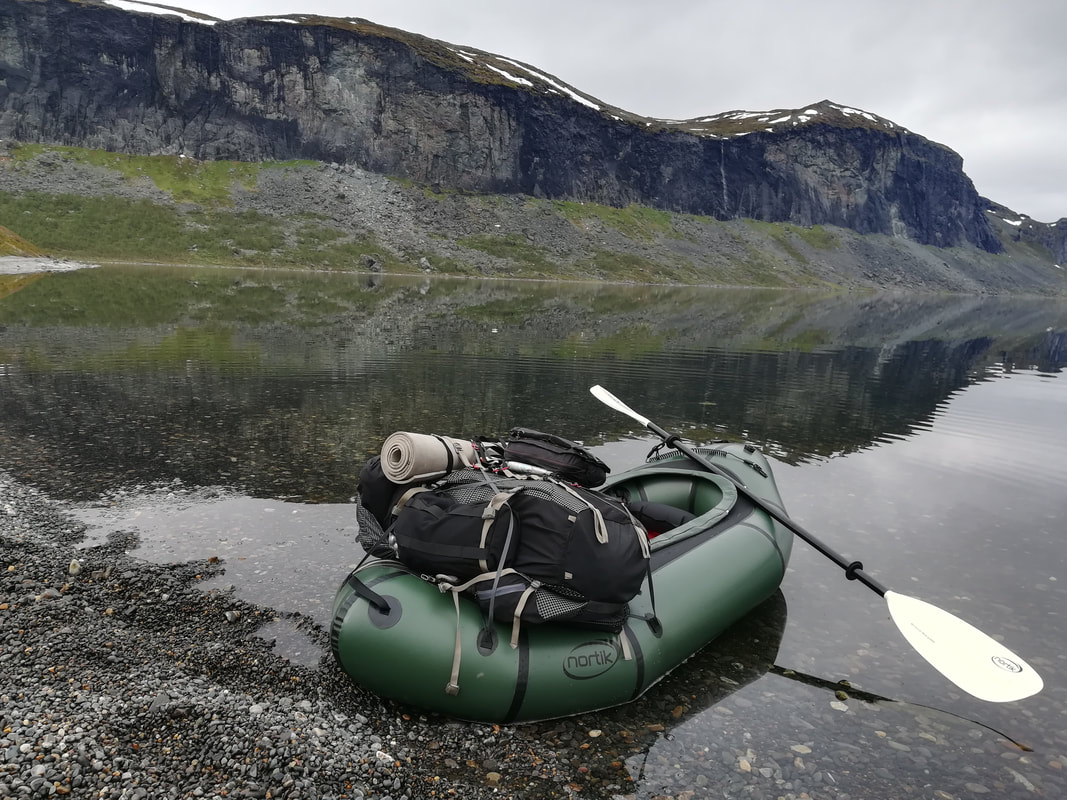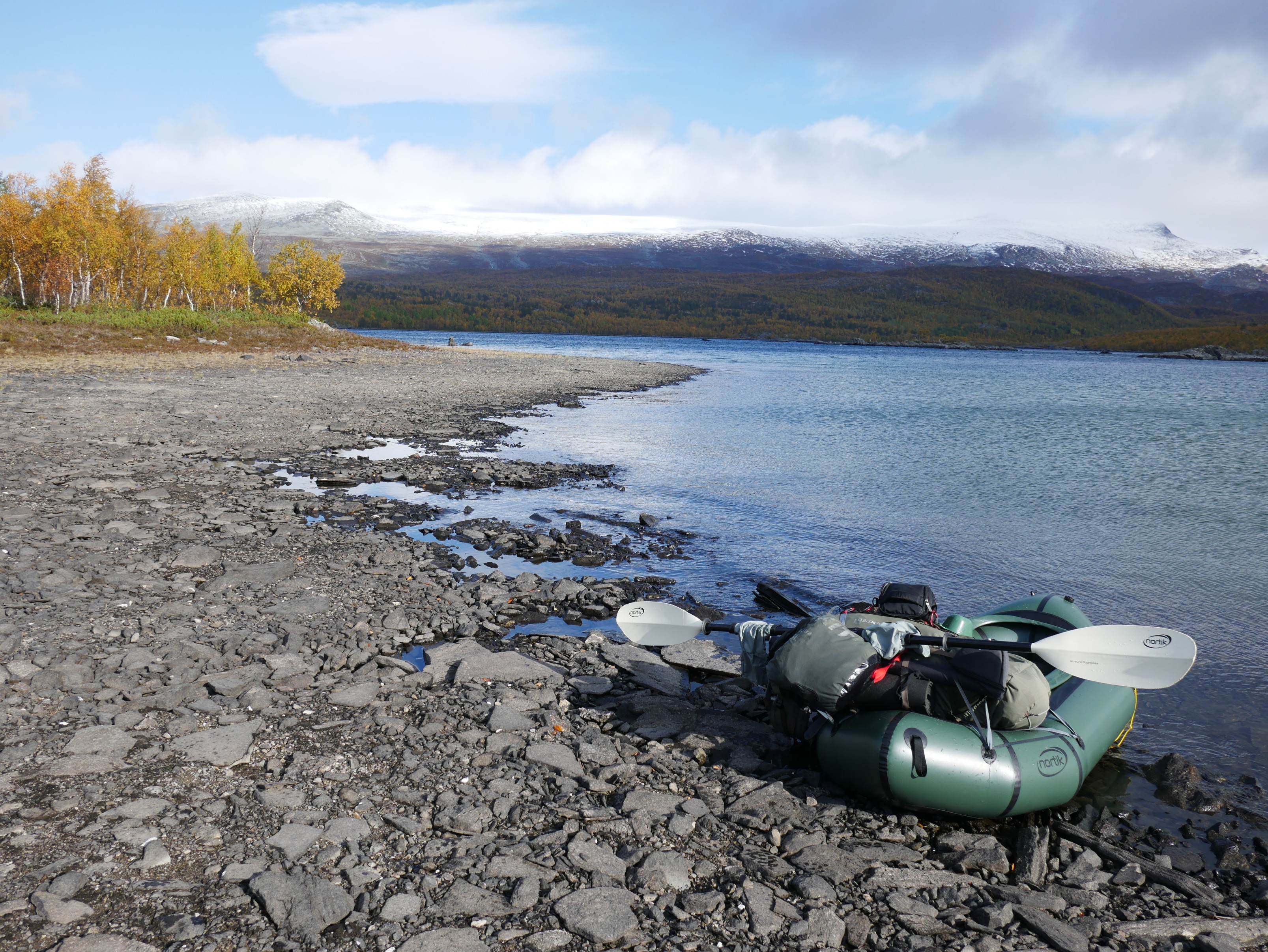With the country emerging from lockdown, more and more people are looking for new ways to experience the outdoors. Packrafting is an eye-catching and imagination-grabbing option. Granted there is an absurdity to packrafting, but what you can do with these brightly coloured inflatable boats is deadly serious. Looking like something akin to a souped-up inflatable pool, the sight of a fully-grown adult sitting in one is a little comical. However, it’s incredible where they can take you and what you can make them do. It’s paddling gone lightweight and fast, opening up a world of wild waters untouched by canoes or kayaks. People are now running Class V rivers in them (i.e. serious white water), as well as pioneering first descents and accessing virgin wild river systems previously landlocked.
Packrafting is a relatively new sport, though the concept of lightweight water travel has been around for a while. Dick Griffith is credited with the birth of the concept, having used a small inflatable craft to travel the wilderness waters of Colorado in the 1950s. The sport incubated amongst Alaskan wilderness diehards for a few decades, shaped by the exploits of adventurer Roman Dial, and nurtured by the innovation of the Tingey family. The Tingeys went on to found the market leader and original commercial packraft, Alpacka. Today there’s a huge number of companies making packrafts with a whole variety of different prices. Raft designs range from pure white-water boats to ultra-light boats designed for the occasional crossing of calm lakes or ‘flatwater’. Boats can typically carry one person plus a fully loaded rucksack, yet simultaneously pack down to a compact bundle that slips into a rucksack for hiking or biking.
Related: Best Walks In The Lake District | 10 Mapped Routes
As a sport, it’s huge fun and can really change the way you access and travel to wild places. Water is no longer a barrier, but an opportunity – you have a whole new dimension to play with. Packrafting can also be very risky; there’s a lot of learning to embark on to make it both safe and enjoyable.
Choosing Your Packraft

It’s easy to start packrafting. In fact, it’s deceptively easy. The boats are incredibly stable, and on flat water, are simple to paddle and play with. Herein lies the risk; an eye on safety is paramount, especially when thinking about getting out onto rivers. You will need more gear than a boat and a paddle, and an understanding of how it all safely works together is a must. Acquiring the skills to use a packraft safely is as important as the boat itself. Arguably, it’s a lifetime’s endeavour and you must be humble on moving water.
The principal piece of equipment is obviously the packraft. A decent one will range from the expensive to the very expensive. However, there is increasingly more choice on the UK market at the moment. You’ll want to look out for particular key features that bring out the potential of these boats. Ultimately, they should be fun and safe to paddle with both you and your backpacking gear. They also need to be packable and portable without too much fuss, thus enabling you to hike to remote water, and to plan journeys that unlock wild lands and beyond. Finally, they need to be robust, as they will take regular scrapes and scratches; a deflated dead raft mid-trip is no fun.
A packraft should be easy to assemble and quick to strip down/pack away. It’s an obvious point, but in my experience it’s critical in ensuring effective wilderness travel. Often some bits of a river are too dangerous to paddle. A carry or ‘portage’ around the obstacle is sometimes necessary. This can mean picking up the boat, or deflating and carrying it. If the boat is a faff to assemble, again this could affect the decision to get off the water and pack the boat. The consequence could be shooting rapids beyond your ken.
A packraft should be quick to inflate using the kit supplied with the boat. This is usually just an inflation bag that screws into the valve. You then capture and squeeze air into the hull. Typically, a boat should take three minutes to inflate – there’s a knack to filling and closing the inflation bag, but it doesn’t take long to get the hang of it. Equally, you’ll want it to pack away and store in your pack easily and with as minimum bulk as possible.
Storage solutions on a packraft are something to think about too. The whole concept of the sport is to transition from one mode of transport to the other (whether bikepacking or hiking) and to secure what you do not need when rafting onto your boat (be it a rucksack or a bike). If you are only paddling around mountain lakes, storage is a minor issue. Most raft designs allow your gear to be lashed ‘on deck’ either in front or behind you with attachments and “D-rings”. That’s fine and well if you don’t need to quickly read the water, but on rapids you’ll have a problem if a rucksack is obscuring your vision. To optimise every part of the raft, some models have a cleverly placed water and airtight zipper to store gear in the actual boat itself, and two of the models here are of that type (often referred to as TiZIP). Your gear, packed in the inner tubes, can slide around a bit but it stays dry inside. To be able to both carry plenty of backpacking gear, and see what’s coming on the water, is a big plus.
Related: Backpacking Backpacks | Buyer’s Guide For Multi-Day Trekking Packs
Another bonus is thigh straps. Thigh straps are usually webbing bands that you slip your knees through allowing you to increase control and even roll your boat (if done skilfully). Seats are a feature on all boats but some are better than others. Splash decks can also be a good idea as they provide a degree of protection from waves, and prevent the boat from filling with water if used with a spray skirt.
Most important, however, is picking the right size of packraft for you. Think of packrafts like a pair of shoes: an ill-fitting pair are useless regardless of how much they cost. Equally, the best raft for you will depend on the body of water you’re planning to travel on, and how much weight you are willing to add to your pack.








